In today’s fast-paced world, the idea of a quiet retreat at home is appealing to many. A low-maintenance green oasis can provide a peaceful escape while requiring minimal effort to maintain. Whether you have a sprawling garden or a small balcony, creating a lush green space is achievable.
This article will guide you through the steps necessary to create your low-maintenance green oasis, including planning, plant selection, design tips, and maintenance strategies.
1. Planning your green oasis
Assess your space
Before diving into the aesthetics of your green oasis, it’s important to assess your available space. This initial assessment lays the foundation for a thriving garden by helping you understand the unique characteristics of your environment.
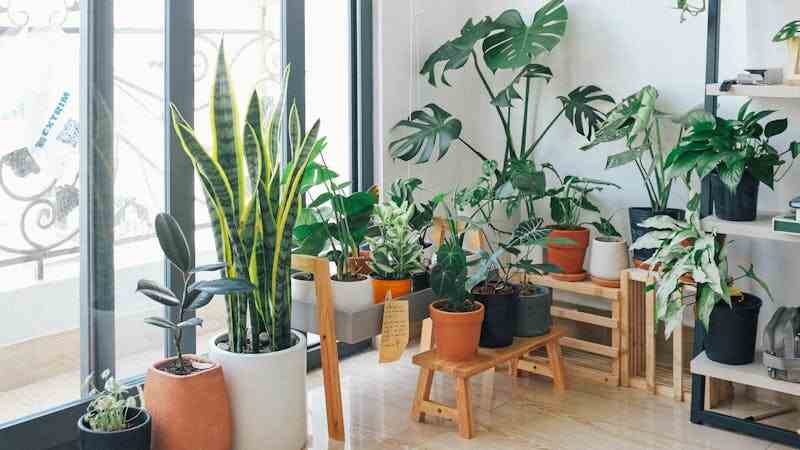
Consider factors such as size, light exposure, and soil type, as these will affect plant selection and overall design. Taking the time to thoroughly assess your space ensures a more harmonious and sustainable garden.
• Size: Determine the square footage of the area you want to convert. Knowing the size of your space is crucial to effectively planning your garden. Measure the dimensions of the area to calculate its total square footage.
This will help you understand how many plants you can accommodate and how to arrange them for maximum effect. Large spaces can allow for more variety, while smaller areas require thoughtful choices to avoid overcrowding.
• Light:
Observe how much sunlight the area receives throughout the day. Understanding light exposure is critical to oasis health and growth. Identify which parts of your garden receive full sun, partial shade, or full shade.
This knowledge will guide you in choosing the right plants that thrive in specific light conditions, ensuring a vibrant and thriving garden. Regularly monitor changes in light as the seasons change, as this can affect the dynamics of your garden.
• Soil Type: To select appropriate plants, and understand soil quality, drainage capabilities, and pH levels. Soil is the foundation of any garden, and knowing its properties can greatly affect plant health. Conduct tests to determine soil texture, fertility, and acidity.
Good drainage prevents root rot, while the correct pH ensures nutrient availability. Understanding your soil type can help you make informed decisions about amendments and choose the best plants to thrive in your oasis garden’s unique conditions.
Define your goals.
What do you want from your green oasis? Is it a quiet place for meditation, a small herb garden, or a place to entertain? Clarifying your goals will help shape design and plant selection.
Consider how you plan to use the space and what activities you want to support, as this description will guide your choices in layout, plant selection, and overall ambiance. Establishing clear goals for your garden is essential to its success.
Whether you envision a quiet space for meditation, a productive herb garden, or an inviting area for entertaining friends and family, your goals will inform every aspect of the design.
Budgeting
Creating a green oasis is not expensive. Establishing a budget is an important step in your garden planning process. By specifying how much you want to spend, you can prioritize your purchases and avoid overspending.
Consider both initial and ongoing costs, ensuring your garden is sustainable and enjoyable without financial stress. A well-planned budget allows for flexibility and creativity while maintaining financial control:
Initial costs: Plants, soil, containers, and hardscaping materials are your initial startup costs. When setting up your green oasis, factor in the costs of purchasing plants, soil amendments, containers, and any difficult elements such as paths or seating.
Researching prices and exploring local nurseries or online options can help you find the best deals. Keeping track of these initial expenses will give you a clear picture of your investment and help you allocate funds wisely.
Ongoing costs:
Water, fertilizer, and maintenance tools are necessary ongoing expenses. After establishing your garden, it’s important to budget for the ongoing costs associated with maintaining it. This includes regular watering, periodic fertilizing, and any tools or equipment you may need for maintenance.
Understanding these ongoing costs will help you assess the long-term viability of your garden and ensure it remains healthy and vibrant over time.
2. Choosing the right plants
Native and drought-tolerant plants
Choose native plants that thrive in your area. Selecting native species is a smart way to create a sustainable garden. These plants are adapted to local climates, soil types, and ecosystems, which means they typically require less water and are more resilient to pests.
By choosing native flora, you’ll support local wildlife and pollinators while reducing the need for chemical interventions. Additionally, native plants often enhance the natural beauty of your landscape and help maintain regional biodiversity.
Incorporating a mix of native and drought-tolerant plants creates a low-maintenance garden that can withstand varying environmental conditions.
Recommended plants
• Succulent: Aloe, agave, and sedum require minimal water. Succulents are an excellent choice for anyone looking to reduce their garden’s water needs. These plants store moisture in their leaves, allowing them to thrive in arid conditions and requiring less frequent watering.
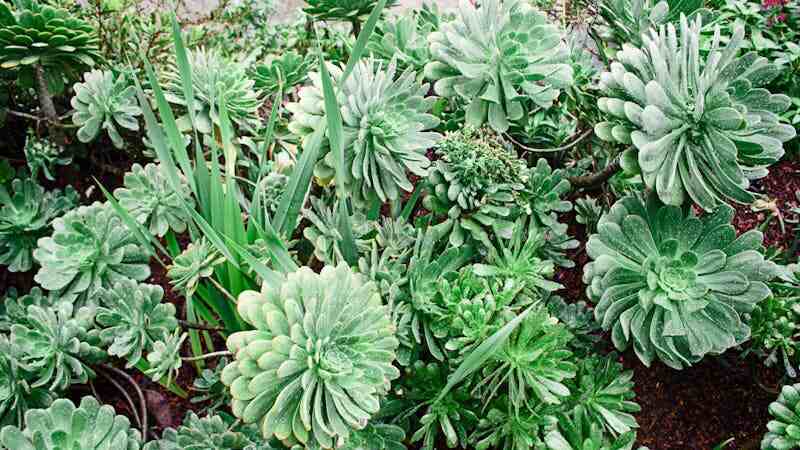
Varieties like aloe not only bring unique shapes and colors to your garden but also have medicinal uses. Agave, with its striking rosettes, adds architectural interest, while sedum offers vibrant blooms and ground cover options. By incorporating succulents into your landscape, you can achieve a beautiful, low-maintenance garden that is well-suited for dry climates
Ornamental Grasses: Varieties such as blue fescue or feather redgrass add texture and are tough. Ornamental grasses are perfect for adding movement and texture to your garden while being highly drought-tolerant. Blue fescue, with its fine, blue-green foliage, creates a soft, elegant look, while feather redgrass provides height and dramatic flair.
These grasses require minimal care and can thrive in poor soil, making them ideal for low-maintenance designs. They also attract beneficial insects and provide habitat for wildlife. Including ornamental grasses in your planting scheme can enhance visual interest while promoting a resilient garden ecosystem.
• Perennials: Choose low-maintenance perennials like coneflowers, daylilies, and lavender, which come back year after year. Perennials are a fantastic investment for any garden, as they return each season, providing consistent beauty with minimal effort.
Coneflowers are vibrant and attract pollinators, while daylilies offer a long blooming period and come in various colors. Lavender not only adds lovely blooms but also offers fragrance and drought resistance. By selecting hardy perennials, you create a garden that thrives on its own, reducing the need for replanting each year and ensuring a lasting display of color and texture in your outdoor space.
Container gardening
If your space is limited, consider container gardening. Container gardening is a great solution for small or urban spaces where traditional gardening is not possible. Using self-watering pots can significantly reduce maintenance by ensuring that plants receive constant moisture without daily watering.
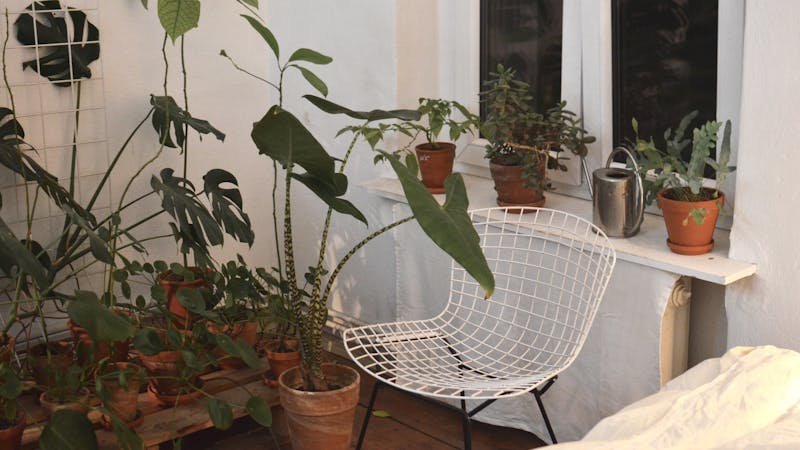
This method is particularly suitable for herbs, small vegetables, or flowering plants, allowing you to enjoy fresh produce and blooms right on your doorstep. Additionally, the containers can be arranged in different configurations, providing design flexibility and enabling you to easily change the look of your garden.
Adopting container gardening can transform even the smallest of spaces into vibrant green havens.
Create layers
Plant the garden bed with different heights and textures. Layering plants adds depth and visual interest to your garden while maintaining a balanced aesthetic. Tall plants act as a backdrop, creating a natural frame for the smaller plants in the foreground.
This technique enhances the overall design, allowing each plant to shine without overwhelming the space. Adding a mix of textures—from broad leaves to delicate foliage—enriches the garden’s appearance. Layering makes the garden feel more cohesive and can help improve light exposure for all plants. By arranging your plants thoughtfully, you can achieve a stunning, vibrant garden that’s easy to maintain.
3. Designing your green oasis
Hardscaping elements
Add hardscaping to reduce maintenance and enhance aesthetics. Integrating hardscaping features into your garden can significantly reduce maintenance while elevating its overall design.
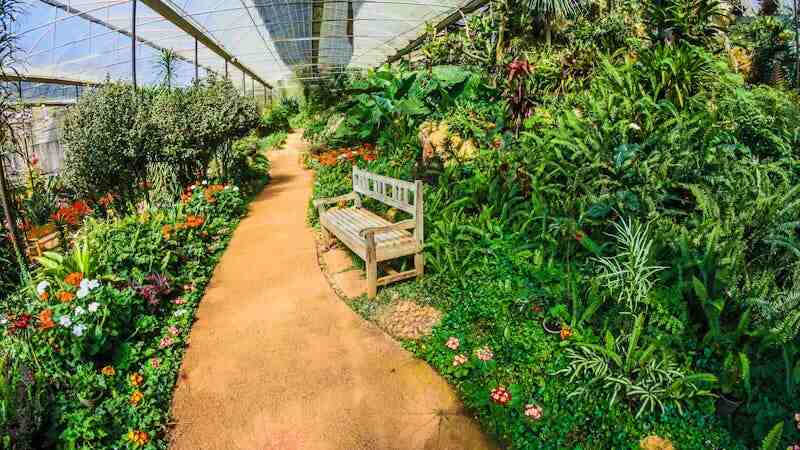
Elements such as pathways, patios, and seating not only improve functionality but also add texture and visual appeal.
Hard materials such as stone, gravel, or brick can create beautiful, durable surfaces that require much less maintenance than traditional lawn areas. By strategically placing hardscaping elements, you can enhance the flow of your garden while creating separate areas for relaxation and enjoyment:
• Pathways: Use gravel, flagstone, or pavers for easy navigation. Paths are essential to guide visitors to your garden while minimizing lawn space and maintenance. Materials such as gravel, flagstone, or pavers create clean, defined paths that are easy to navigate and visually appealing.
These levels help prevent soil compaction and provide a practical way to access different areas of your garden. By adding well-designed pathways, you not only increase the functionality of your outdoor space but also create an inviting environment that encourages exploration and enjoyment.
• Seating: Place a simple bench or two chairs to create a focal point. Adding seating areas to your garden can turn it into a relaxing retreat, encouraging you to spend more time outdoors. A small patio or deck, complemented by comfortable seating, serves as a gathering space for family and friends.
This feature enhances the aesthetic appeal of your garden while providing a designated space for relaxing and socializing. By choosing sustainable materials and thoughtfully placing seating in your landscape, you create an inviting environment that enriches your gardening experience and allows you to enjoy the beauty of your green oasis.
.4. Recovery strategy
Give water
Create a watering routine that suits your plants’ needs. A consistent watering schedule is vital to the health of your plants. Grouping plants with similar water needs makes this task easier, allowing for efficient and effective irrigation. Consider factors such as plant type, size, and climate when developing your routine.
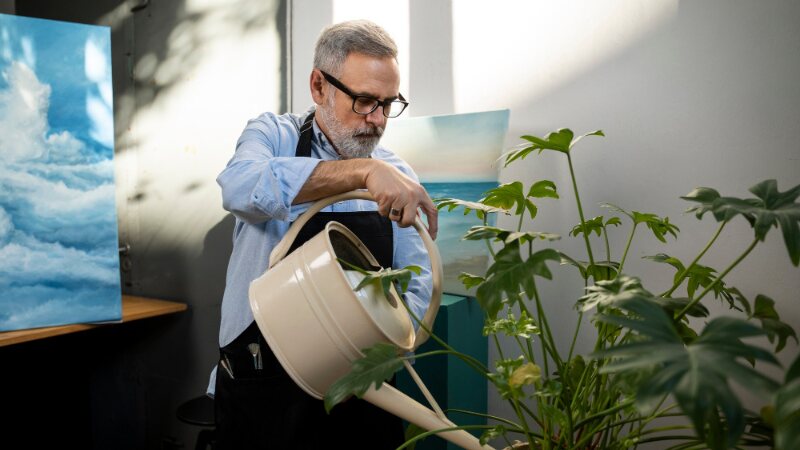
By paying attention to the individual needs of your plants, you can ensure they receive proper care while conserving water and minimizing waste.
Minimal pruning
Choose plants that require minimal pruning. Choosing native and drought-tolerant plants can significantly reduce the maintenance required for your garden. Many of these plants naturally maintain their shape and health, allowing you to enjoy a vibrant garden without the need for extensive pruning.
This not only saves you time but also promotes a more comfortable gardening experience. By preferring low-maintenance species, you can create a beautiful, sustainable garden that thrives with minimal intervention.
Pest management: Plant a variety of plants to attract beneficial insects. Biodiversity in your garden helps create a balanced ecosystem that naturally manages pests without relying on chemical treatments.
By choosing a mix of flowering plants, herbs, and vegetables, you can attract pollinators and predatory insects that keep pest populations in check. When intervention is necessary, consider organic practices that minimize harm to beneficial species, promoting a healthier and more resilient garden environment
5. Weather Considerations
Preparing for spring
When winter is over, prepare your oasis by cleaning up debris, testing the soil, and planting new additions. Start by removing fallen leaves, branches, and any other debris that accumulates. Testing the soil for pH and nutrient levels will help you determine what amendments are needed for optimal plant health.
Additionally, it’s a great opportunity to divide perennials that have outgrown their space and freshen up your mulch, ensuring a vibrant and healthy garden for the growing season ahead.
Summer care: During the warmer months, be sure to water regularly and check for pests regularly. ‘Tis the season to enjoy your oasis, so consider adding outdoor lighting for evening relaxation.
Fall recovery
In the fall, clean up by removing dead plants and debris. This is the best time to plant perennials and bulbs for spring flowers.
Winter strategy
If you live in a cold climate, prepare your oasis for winter. Protecting your garden during the colder months is essential to its longevity and beauty. Cover delicate plants with mulch to protect their roots and prevent freeze damage.
For container plants, consider bringing them indoors or placing them in a sheltered location to protect them from harsh weather. Implementing these strategies will help maintain the health of your oasis, ensuring it’s vibrant and ready to thrive come spring.
6. Sustainable practices
Composting:
Consider installing a rain barrel to collect rainwater. This eco-friendly practice not only conserves water but also provides free resources for your oasis garden. Compost provides rich nutrients to your plants and reduces waste. By recycling kitchen scraps and yard waste, you can create nutrient-rich compost that naturally enriches your soil

This practice not only benefits your plants but also contributes to a more sustainable lifestyle by reducing landfill waste. Adding compost to your gardening routine can lead to healthier plants and a more eco-friendly approach to maintaining your green oasis.
Organic fertilizers
Use organic fertilizers and pest control methods to maintain a healthy ecosystem. Adopting organic gardening practices not only supports the health of your plants but also the environment. Organic fertilizers enrich the soil with natural nutrients, promoting strong growth without harmful chemicals.
Additionally, using organic pest control practices protects beneficial insects and encourages biodiversity. By fostering a healthy ecosystem in your garden, you can enjoy a thriving oasis that grows naturally and sustainably.
7. Enhancing the environment
Aromatherapy
Add aromatic herbs such as rosemary, mint, or thyme. Adding fragrant herbs to your garden not only enhances its sensory appeal but also offers culinary benefits. These herbs can add flavor to your dishes and act as natural remedies.
Their pleasant scent can create a calming atmosphere in your oasis, encouraging relaxation and enjoyment. By growing aromatic herbs, you enrich your garden experience while making your space more functional and enjoyable
Their pleasant scent can create a calming atmosphere in your oasis, encouraging relaxation and enjoyment. By growing aromatic herbs, you enrich your garden experience while making your space more functional and enjoyable.
Lighting
Install outdoor string lights or solar garden lights to create a cozy atmosphere in the evening. The right lighting can turn your garden into a magical retreat after sunset. String lights and solar-powered fixtures create a warm glow, enhancing the enchanting feel of your oasis.

It allows for fun evening gatherings or peaceful nights under the stars. Thoughtful lighting design not only enhances the aesthetic appeal of your garden but also encourages you to enjoy your outdoor space long after the sun goes down.
Textiles
Add outdoor cushions, rugs, and throws for an inviting seating area. Enhancing your outdoor space with textiles can create a warm and inviting environment. Weather-resistant fabrics ensure that your cushions, rugs, and throws can withstand the elements while providing comfort and style.
Choose colors and patterns that complement your garden’s aesthetic to create a cohesive look. By adding textiles, you can transform a simple seating area into a comfortable retreat where you can relax and enjoy your green oasis
Conclusion
Creating a low-maintenance green oasis at home is not only possible but also incredibly rewarding. By carefully planning your space, choosing appropriate plants, incorporating hardscaping elements, and establishing effective maintenance strategies, you can cultivate a peaceful retreat that enhances your quality of life.
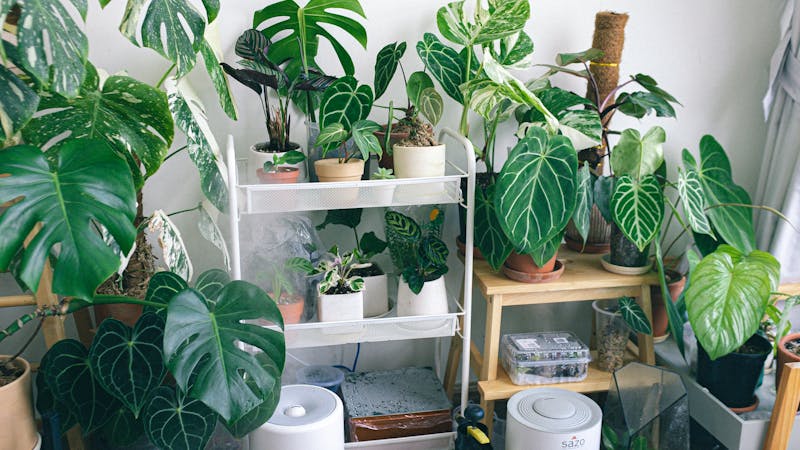
Increases With a little upfront effort, you can enjoy the beauty of nature right outside your front door while transforming your home into a tranquil sanctuary that requires minimal maintenance. Embrace the journey, and let your green oasis flourish.
FAQs 1. What is a low-maintenance green oasis?
A low-maintenance green oasis is a tranquil outdoor space designed with minimal maintenance in mind. This usually includes drought-resistant plants, efficient watering systems, and hardscaping elements, making it easy to enjoy without extensive labor.
2. How can I assess my space to create a green oasis?
Start by measuring the area, noting the sunlight exposure (full sun, partial shade, or full shade), and evaluating the soil quality.
3. What types of plants are best for a low-maintenance garden?
Native and drought-resistant plants are ideal. Options include succulents, ornamental grasses, and low-maintenance perennials such as coneflowers and lavender. These plants require less water and are more resilient.
4. Can I create a green oasis in a small space?
Of course! Container gardening, vertical gardens, and the use of hardscaping elements can maximize small areas, allowing you to create a lush green oasis environment without the need for vast land space.
5. What are some effective watering strategies?
Group plants with similar water needs and consider using drip irrigation or soaker hoses. This method saves time and ensures efficient watering, especially during the warmer months


